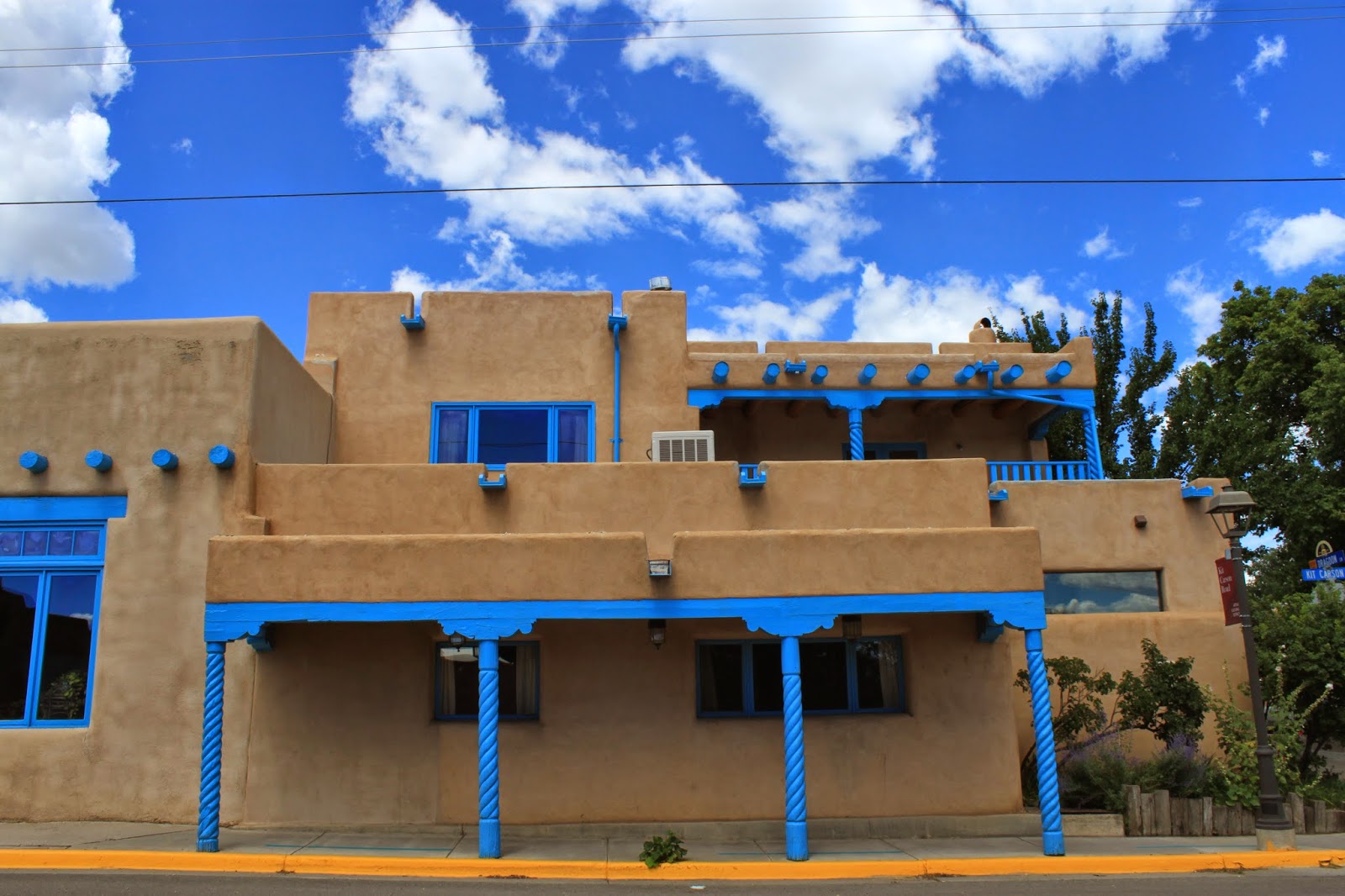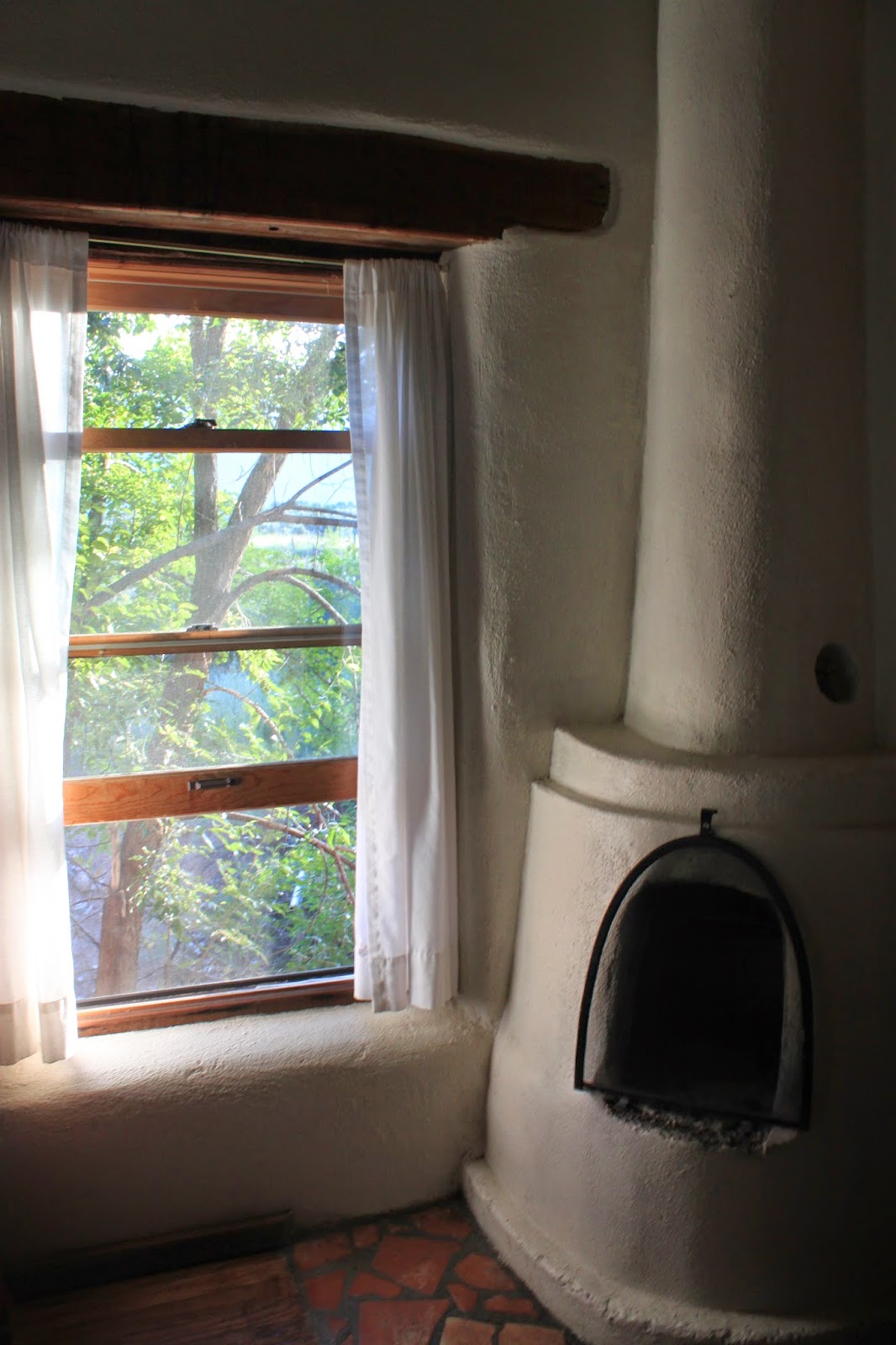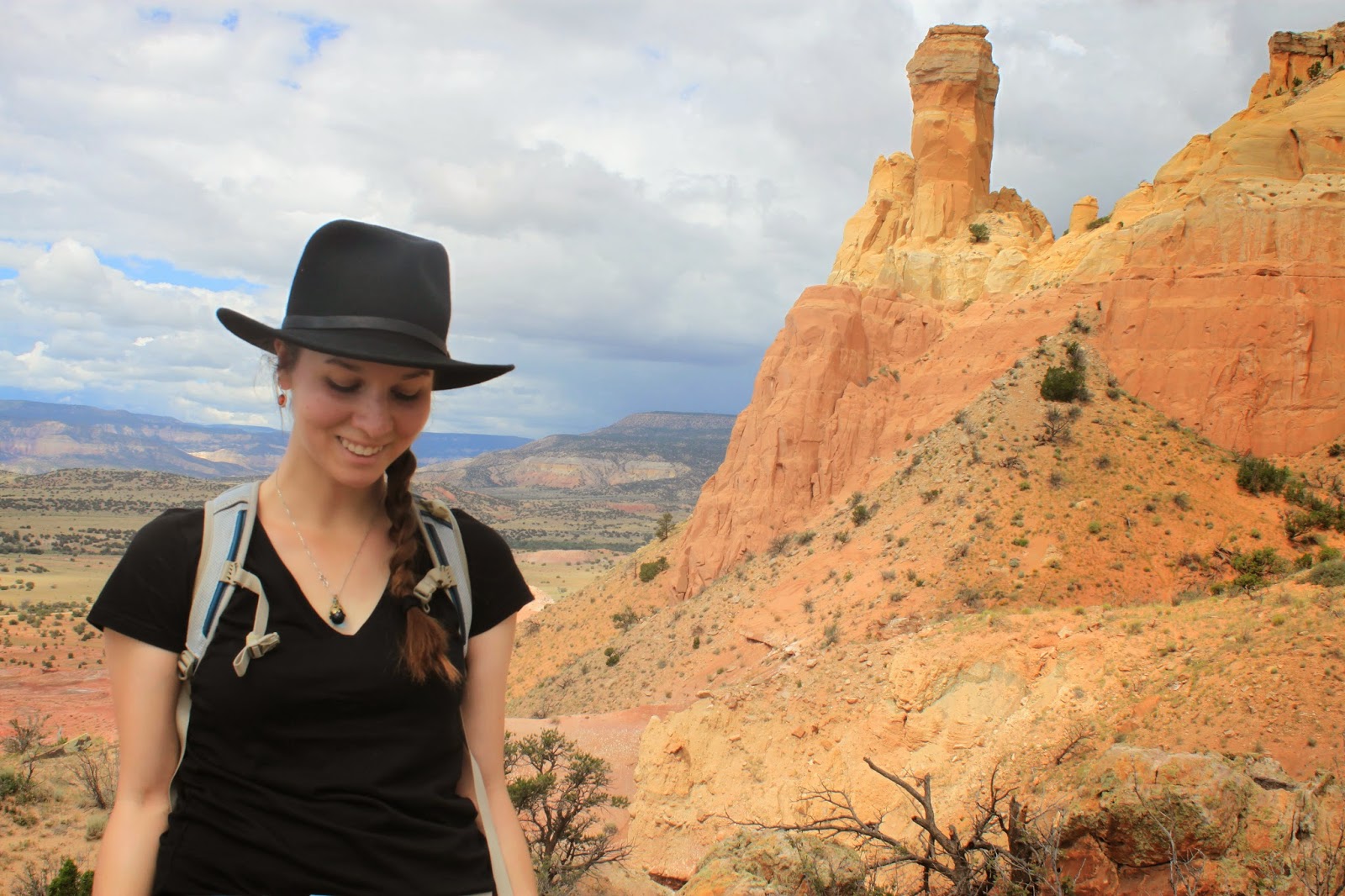Part Three: The Journey to Taos and
the Magic of the Mabel Dodge Luhan House
I left Santa Fe how I imagine most people do-with a desire to stay longer. But I also had plans waiting for execution and the first included taking the high road to Taos. Like most things in Northern New Mexico, "the high road to Taos" has an almost mythical quality to it, both for the religious towns that dot the way north, and also due to the shifting terrain through the Sangre de Cristo Mountains. The towns are living remnants of Spanish colonization, with names that would never be found in New England, names like Las Trampas, Ojo Sarco, Truchas, Cordova.
The one I looked forward to knowing was Chimayó.
Chimayó exists not too far from Española, where one turns sharply east to continue up the high road on route 76. Most go for religious reasons: the village is home to the El Sanctuario de Chimayó, a Catholic church and shrine that is now a National Landmark. Some people say it's one of the most important pilgrimage sites in the country. I believe it. When I went on a beautiful Friday morning, it was packed with visitors, the majority of which seemed to be present due to spiritual inclinations rather than a tourist's curiosity. The place has a long history dating to the early 19th century and is a somewhat sprawling site, filled with lots of small adobe shrines and even trading posts, like the one pictured above, selling things like holy dirt and other sacred materials. Despite this commercial aspect, it felt untouched by modernity, which is remarkable given how many people visit each year. I didn't linger long-there was another place in Chimayó I wanted to see for myself, and that was the shop of the Ortega Weavers, a family who has been weaving for centuries. Chimayó has a strong weaving tradition - the Ortega family is not alone- and I'm fascinated by how this one particular craft defined the town, not only in the 18th century, but even still today. I, of course, left with a few beautiful pieces that serve as a daily reminder of my trip, now so many months ago.
Afterwards, I continued my journey north, imagining how incredible this land must have appeared to the once Spanish settlers. Many times, I felt propelled to pull over, take pictures and record the transition from the more arid, high desert to rampant forests that seemed more appropriate to the nearby state of Colorado than New Mexico. The road was indeed winding, and one I would not like to find myself driving during a winter's night. This road is meant to be enjoyed at the height of the day, when all it's glory is bathed in sunlight.
And then I reached Taos. My first stop was to see the famous Rio Grande Gorge Bridge, a place not for those fearful of heights. It's the seventh highest bridge in the country and I've never seen anything like it before. Of course, the bridge itself was a beautiful feat of engineering, but it's the gorge below that's the main attraction. People stop, park their cars, and walk across the bridge to view it from all angles. It's hard not to be a tiny bit nervous, even if you feel exhilarated by what you see. It's a long way down.
The town itself is charming, and is home to the native Pueblo tribes, celebrities and hippies, among others, of course. I heard one person say that Taos plaza reminded her of what Santa Fe used to be, before it became such a tourist destination. But I found the same type of shops and restaurants in Taos that Santa Fe offers, which wasn't necessarily a bad thing. The experience was unique in Taos not because of the historic plaza, but because of the landscape. You can almost touch the mighty mountains with your hands.
I could behold those mountains from my room at the Mabel Dodge Luhan house, the other highlight of my trip further north. I couldn't wait to arrive. I had read the memoirs of Mabel Dodge Luhan before my trip, a woman who had once entertained the likes of D.H. Lawrence and Willa Cather, among scores of others. She was quite a wealthy patron of the arts and had both the liberty and luxury to move to New Mexico as soon as she first set her eyes upon it. It was love at first sight. She had lived and moved through the artistic circles of Florence and New York, but chose the beauty that Taos had to offer and never left thereafter. Instead, she invited everyone she knew to venture west for a taste of her 'escape to reality,' as she called it. With the help of her new husband, an Indian man from the nearby Pueblo tribe, they built the house that now serves as a conference center and inn, a house I couldn't wait to see for myself.
It was truly glorious. If Mabel's intent was to create a nest of inspiration that was both stimulating to the senses and comforting, then she succeeded. Even all these years later, one can move through the rooms of the inn feeling energized by its atmosphere, created by not only the stuff of the architecture, the furniture, etc, but also by the legacy of creative souls who visited here. Two nights for me was not at all enough. I don't think a week could have been. To pass through a space that writers I've long admired and loved also knew was thrilling. In a way, it felt like home.
















.jpg)
.jpg)

















.jpg)

















